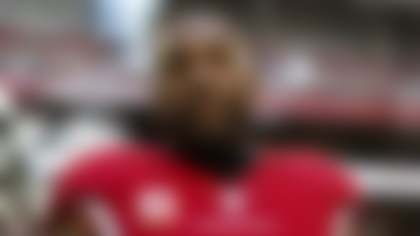The next chapter in the Peyton Manning story comes in April, when he reports for the Denver Broncos' offseason program and acclimates himself to new environs for the first time since the 1990s.
The next question is which Peyton Manning will show up there?
Will it be the Manning of 2007? That might be tough to expect, given that the future Hall of Famer is now 36. And especially because the idea of Manning losing arm strength isn't a new one.
Even before the four neck procedures were done and the nerve regeneration was necessary, some scouts noticed a difference in the then-Colts quarterback. His numbers didn't tail off much in 2010, particularly when you consider the injuries that Indy suffered on offense, but there were subtle hints caught on tape that revised the book on Manning.
"The fall-off was significant on film," said one scout from a rival AFC team. "He showed stiffness and lost athletic traits. What made him special was never his athletic ability or movement skills, but you could see it with his arm strength, too."
A comparable case is that of Chris Weinke, who went through the same type of nerve damage and regeneration while he was in his mid-20s at Florida State. Weinke told me he actually came back improved.
"You focus on the little muscles," he said. "You rebuild yourself really from ground zero, because of the atrophy, and when I came back, fundamentally I was better, I was stronger, and actually threw the ball with more velocity after the surgery than I did prior."
The difference, of course, is that Manning is 36. The good news is the loss of some arm strength in 2010 could've been related to the neck injury he addressed, so the opportunity to return better, like Weinke did, is there.
La Canfora: Risky business
Nothing is certain in the NFL, including Denver's chances of winning with Peyton
Manning, writes Jason La Canfora. **More ...**
"We break the field into 'short', 'intermediate' and 'deep', and on patterns deep and outside the numbers, you'd notice more air under the ball," the AFC scout said. "There'd be more arc. Some it's by design, placing the ball where it needs to be. But it looked like his velocity was tailing off at the end of 2010. That's probably what he's most worried about.
"His rotation was fine, his accuracy was fine. But as far as the ball getting from Point A to Point B, and how much time he was giving defensive backs to drive on the football, there was enough there for concern."
It's important to remember that Manning was able to allay the concerns of several teams to the point where he commanded a $19.2 million-per-year deal and the kind of fervor for his services that's seldom seen. John Elway said he only felt comfortable endorsing the signing to owner Pat Bowlen after a) gauging Manning's confidence, and b) spending two-and-a-half hours going over the medical factors with the team's doctors and trainers while flying back from Durham, N.C. It's a fair bet that the other interested teams were similarly sold.
"I can tell you, seeing some of the footage of him throwing, there was depreciation in velocity and zip," said one executive from a team that pursued Manning. "It gets there, but there's some natural descent in how he's throwing. Is it still good enough? Yeah. It's not what it used to be, but he'll keep getting better, and it's only natural that it might not be where it was. He's 36. But with his ball placement, his location, his timing, his anticipation -- which is outstanding, right place, right time, every time -- he'll be fine."
And if the velocity issue is still there in the fall? "There'll be an adjustment," he said. "When you're trying to squeeze it in that tight hole, you have to understand if you still have that ability. And if you don't have the ability to make some of those throws, you have to ask 'How aggressive can I be?' You have to be more selectively aggressive."
This story still has plenty of time to play out. The offseason program doesn't start until April 16, and the coaches can't supervise field drills for over a month. After that, Manning will have OTAs, a minicamp and a full training camp to keep building himself back to full strength.
Will he get there? Will he be able to adapt and adjust if he doesn't?
Knowing the player, his drive and talent, the easy answer is yes. Knowing the history, though, some caution is warranted.
Follow Albert Breer on Twitter @albertbreer.



